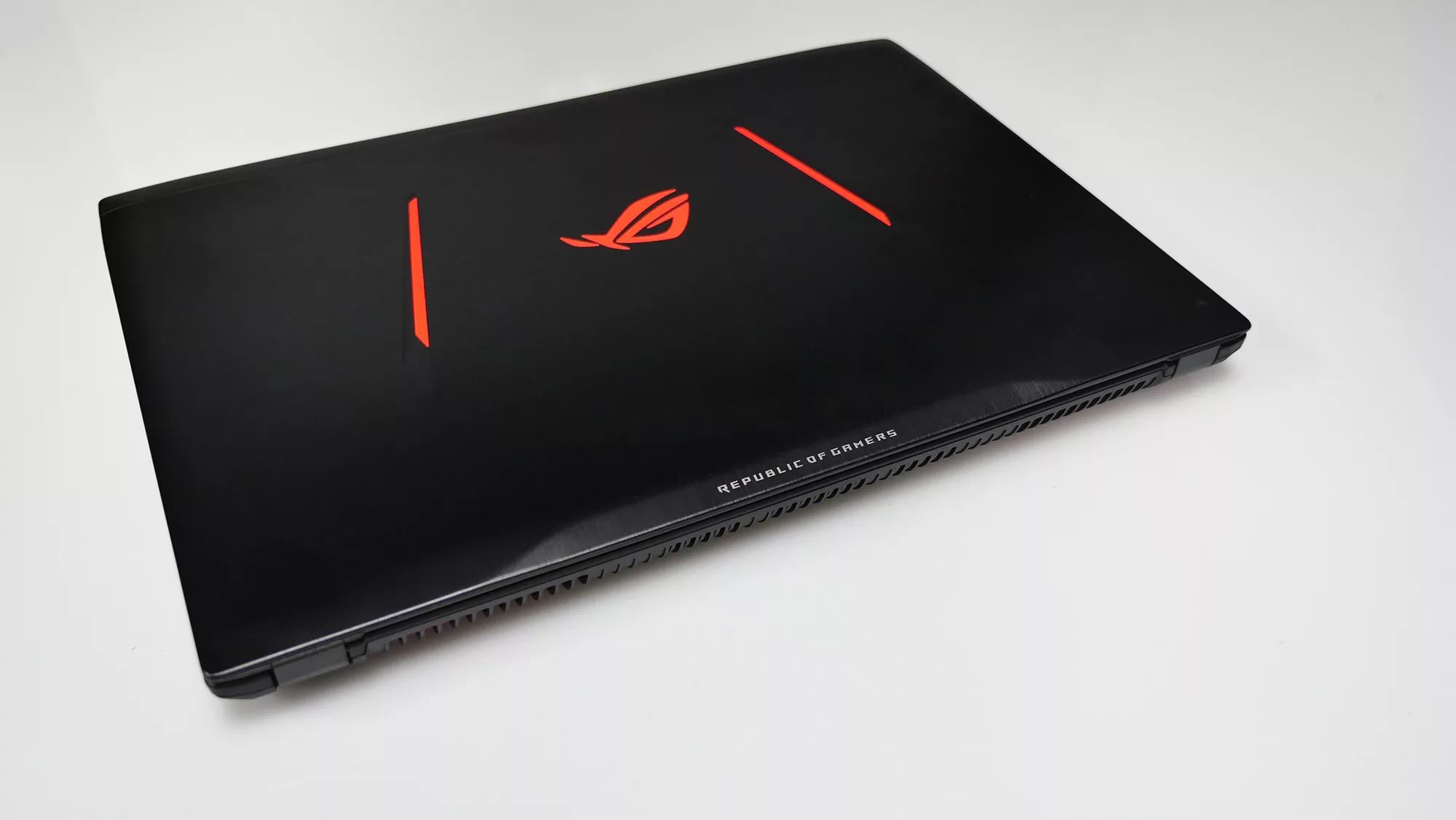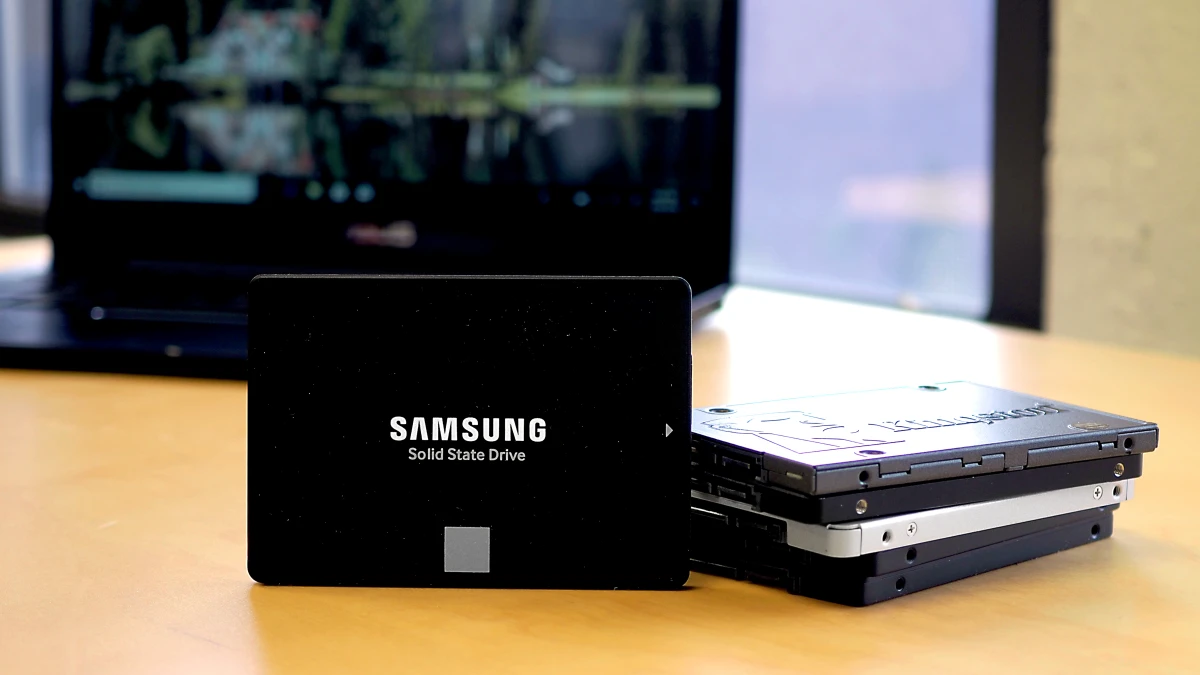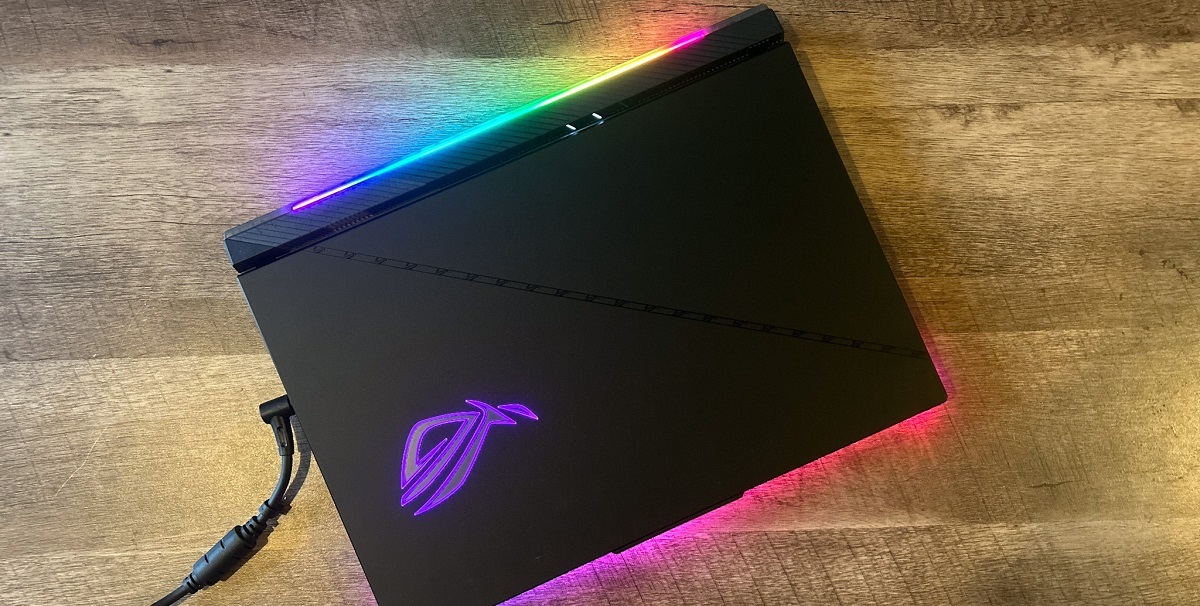Introduction
Welcome to the world of gaming laptops, where power, performance, and storage capacity are crucial factors for avid gamers. If you’re the proud owner of an ASUS Republic of Gamers (ROG) laptop, you already know the exceptional capabilities these machines possess. However, when it comes to storage space, you might be wondering just how many hard drives you can fit in your ASUS ROG laptop.
ASUS ROG laptops are renowned for their cutting-edge technology and gaming-centric features. These laptops offer the perfect combination of style, durability, and high-performance components, making them popular among gamers worldwide. But when it comes to storage options, it’s important to know the limitations and possibilities of your device.
In this article, we will explore the different types of hard drives that are compatible with ASUS ROG laptops and the physical space constraints that might affect your storage options. We will also discuss the various models of ASUS ROG laptops and their maximum hard drive capacity. Additionally, we will delve into the different storage options available and how to add or upgrade your hard drives in an ASUS ROG laptop.
Before we jump into the exciting world of storage, it’s important to understand that hard drives are an essential component of any computer system. They store your operating system, programs, and files, providing you with quick access and a seamless gaming experience. Having sufficient storage space is vital to install and store your favorite games, multimedia files, and other data.
So, if you’re ready to discover the possibilities of expanding your storage space in your ASUS ROG laptop, let’s dive in!
Types of Hard Drives Compatible with ASUS ROG Laptops
When it comes to expanding the storage capacity of your ASUS ROG laptop, you have a few options to choose from. The type of hard drive you select will depend on factors such as budget, storage needs, and performance requirements. Here are the most common types of hard drives compatible with ASUS ROG laptops:
- Solid-State Drives (SSDs): SSDs are the preferred choice for many gamers due to their lightning-fast read and write speeds. These drives use NAND flash memory to store data, resulting in significantly faster performance compared to traditional hard disk drives (HDDs). SSDs are compact, lightweight, and energy-efficient. They are available in various capacities, ranging from 128GB to 2TB or more, making them an excellent choice for both storing games and improving overall system responsiveness.
- Hard Disk Drives (HDDs): HDDs have been the traditional storage solution for years and are still widely used. They offer larger storage capacities at a more affordable price compared to SSDs. While they can’t match the speed of SSDs, HDDs are perfect for storing large media files and games that do not require lightning-fast load times. ASUS ROG laptops usually come with a pre-installed HDD, and you have the option to upgrade to a higher capacity drive if needed.
- Hybrid Drives: Hybrid drives, also known as SSHDs (Solid-State Hybrid Drives), combine the best of both worlds by integrating solid-state flash memory and traditional hard drive technology. These drives utilize the SSD portion to store frequently accessed data, improving overall system performance, while the HDD portion provides ample storage capacity for less frequently accessed data. Hybrid drives offer a balance between speed and storage capacity, making them a suitable option for gamers who want faster load times without sacrificing storage space.
It’s important to note that when selecting a compatible hard drive for your ASUS ROG laptop, you need to consider the form factor and interface compatibility. Most ASUS ROG laptops support the standard 2.5-inch form factor, which is common for both SSDs and HDDs. Additionally, the laptops typically feature SATA III or NVMe M.2 interfaces, depending on the model, allowing you to choose the appropriate interface for your desired hard drive.
Now that you’re familiar with the types of hard drives compatible with ASUS ROG laptops, it’s time to explore the physical space constraints these laptops possess and how they might impact your storage options.
Physical Space Constraints
While ASUS ROG laptops provide impressive performance and storage capabilities, there are physical constraints to consider when it comes to adding or upgrading hard drives. These constraints primarily revolve around the available physical space within the laptop’s chassis.
Most ASUS ROG laptops have a compact and sleek design, prioritizing portability without compromising on performance. This design ethos may result in limited internal space for additional hard drives. Therefore, it’s crucial to check the specifications and documentation of your specific laptop model to understand the physical space available for storage expansion.
One common limitation arises from the number of drive bays provided in the laptop. Some ASUS ROG laptops may only have one drive bay, which means you can only install a single hard drive. In such cases, you might need to replace the existing drive or consider alternative storage solutions, such as external hard drives or leveraging cloud-based storage.
Another factor to consider is the maximum drive height or thickness supported by the laptop. The storage bay or slot within the laptop chassis might have limited vertical space, restricting the compatibility of certain thicker hard drives. Ensure that the hard drive you choose fits within the specified dimensions to avoid any compatibility issues. It’s worth noting that most standard 2.5-inch SSDs and HDDs have a slim form factor that should be compatible with ASUS ROG laptops.
Furthermore, the laptop’s cooling system also plays a crucial role in storage expansion. Heat dissipation is vital to maintain optimal system performance and prevent overheating. Adding additional hard drives might affect the airflow within the laptop, potentially impacting the cooling efficiency. Therefore, it’s essential to consider the impact on the laptop’s thermal management system and ensure that it can handle the increased heat generated by the added storage.
Lastly, while some ASUS ROG laptops may offer easy accessibility to the storage bay, allowing for hassle-free installation or replacement of hard drives, others might require disassembling the laptop to access the storage area. If you’re not comfortable with hardware modifications, it’s advisable to seek professional assistance to ensure a smooth and error-free installation.
Understanding the physical space constraints of your ASUS ROG laptop is vital before attempting to add or upgrade your hard drives. By familiarizing yourself with these limitations, you can make informed decisions about storage expansion options and avoid any compatibility or functionality issues.
Models and Maximum Hard Drive Capacity
ASUS offers a wide range of ROG laptop models, each with its own specifications and maximum hard drive capacity. The maximum capacity refers to the largest size of storage drive that the laptop can support without any additional modifications or upgrades.
It’s important to note that the maximum hard drive capacity can vary depending on the specific model and configuration of the ASUS ROG laptop you own or intend to purchase. Therefore, it’s recommended to refer to the official documentation or contact ASUS support to confirm the storage capacity limitations for your specific model.
Here are some examples of popular ASUS ROG laptop models and their maximum hard drive capacity:
- ASUS ROG Strix Scar III: This model supports up to two storage drives, typically a combination of an SSD and HDD. The maximum capacity might vary based on the specific configuration, but it can accommodate up to 2TB for HDDs and up to 1TB for SSDs.
- ASUS ROG Zephyrus S: The Zephyrus S model usually offers a single storage drive slot, allowing you to install either an SSD or an HDD. The maximum capacity can range from 2TB for HDDs to 1TB for SSDs.
- ASUS ROG G703GX: With its larger form factor, the G703GX model provides more space for storage expansion. It can typically support up to three storage drives, offering a maximum capacity of up to 6TB (2TB per drive).
These examples represent just a few of the many ASUS ROG laptop models available in the market. Each model may have different storage configuration options, including the number of drive bays and the supported storage capacities. Therefore, it’s essential to research and verify the specifications for your specific model to determine its maximum hard drive capacity.
Keep in mind that while some ASUS ROG laptops may have limitations on the maximum capacity for a single drive, there are still options to expand your storage space. For instance, you can install multiple drives or opt for higher-capacity storage options, such as larger SSDs or HDDs.
Understanding the models and their maximum hard drive capacity will help you make informed decisions when choosing the storage configuration for your ASUS ROG laptop. By selecting the appropriate storage options, you can ensure that you have enough space to store your games, software, multimedia files, and any other data you need for your gaming adventures.
Understanding Storage Options
When it comes to storage options for ASUS ROG laptops, there are a few key factors to consider. Understanding these options will help you make an informed decision based on your storage needs, budget, and performance requirements.
Capacity: The storage capacity refers to the amount of data that a hard drive can hold. It is typically measured in gigabytes (GB) or terabytes (TB). ASUS ROG laptops offer various storage capacities, ranging from smaller SSDs with capacities as low as 128GB to larger HDDs or SSDs with capacities of several terabytes. Consider the size of your game library, multimedia files, and other data that you plan to store to determine the appropriate capacity for your needs.
Read and Write Speeds: The read and write speeds of a storage drive determine how quickly data can be accessed and transferred. SSDs typically offer faster read and write speeds compared to HDDs, resulting in quicker loading times for games and applications. However, it’s important to note that SSDs with faster speeds can be more expensive. Consider your budget and performance requirements to strike a balance between affordability and speed.
Form Factor: The form factor refers to the physical size and shape of the storage drive. Most ASUS ROG laptops accommodate the standard 2.5-inch form factor, which is common for both SSDs and HDDs. However, some laptops, particularly newer models, may also feature the smaller M.2 form factor for NVMe SSDs. Ensure that the storage drive you choose is compatible with the form factor supported by your laptop.
Interface: The interface determines how the storage drive connects to the laptop. SATA III (Serial ATA III) is the most common interface for 2.5-inch SSDs and HDDs, offering good performance and compatibility. NVMe (Non-Volatile Memory Express) is a newer interface that offers faster data transfer speeds, especially for M.2 SSDs. Check the specifications of your ASUS ROG laptop to determine which interface it supports.
Price: Storage options can vary significantly in price. SSDs tend to be more expensive than HDDs due to their faster speeds and higher performance. However, prices have been gradually decreasing, making SSDs more affordable for gamers. Consider your budget and prioritize your storage needs based on capacity, speed, and performance requirements to make a cost-effective choice.
By understanding these storage options, you can evaluate and select the storage drives that best suit your needs. Whether you prioritize speed, capacity, or a balance of both, ASUS ROG laptops offer a range of storage options to enhance your gaming experience and ensure you have ample space to store your games, multimedia files, and more.
Adding Additional Storage to an ASUS ROG Laptop
If you find yourself running out of storage space on your ASUS ROG laptop, fear not! Adding additional storage is a feasible and relatively straightforward process. Here’s a step-by-step guide on how to do it:
Step 1: Identify Available Storage Options: Start by identifying the available storage options in your ASUS ROG laptop. Check the specifications and documentation to determine the number of drive bays or slots and the supported form factors and interfaces.
Step 2: Choose the Storage Drive: Based on your storage needs and budget, select the appropriate storage drive. You can opt for SSDs, HDDs, or hybrid drives (SSHDs) based on your preference for speed, capacity, and performance.
Step 3: Purchase the Storage Drive: Once you have chosen the storage drive, purchase it from a reliable retailer or online store. Ensure compatibility with your laptop’s form factor and interface.
Step 4: Prepare to Install: Before physically installing the new storage drive, you may need to make some preparations. This might involve backing up important data from your existing drive, creating recovery media, or disabling any security features that could interfere with the installation process. Refer to your laptop’s manual or support resources for specific guidance.
Step 5: Install the Storage Drive: Carefully open up your laptop’s chassis following the manufacturer’s instructions. Locate the drive bay or slot where you will install the new storage drive. Securely connect the drive to the appropriate interface (SATA III or NVMe) and insert it into the slot or attach it to the drive cage. Make sure all connections are secure before closing the laptop’s chassis.
Step 6: Format and Initialize: Once the new storage drive is physically installed, you may need to format and initialize it to be recognized by your operating system. This step may vary depending on your laptop’s configuration and the operating system you use. Refer to the manufacturer’s instructions or consult online resources for detailed guidance on formatting and initializing the drive.
Step 7: Verify and Set Up: After formatting and initializing, restart your laptop. Verify that the new storage drive is recognized by your operating system. You can then proceed to set up the drive, such as assigning a drive letter, creating partitions, and adjusting settings as per your requirements.
Adding additional storage to your ASUS ROG laptop can significantly enhance your storage capacity and allow you to store more games, multimedia files, and software. If you are uncomfortable with performing the installation yourself, it is recommended to seek professional assistance to ensure a smooth and error-free process.
Upgrading Hard Drives in ASUS ROG Laptops
If you’re looking to upgrade the existing hard drive in your ASUS ROG laptop, whether it’s for more storage capacity or improved performance, follow these steps to ensure a successful upgrade:
Step 1: Determine Upgrade Needs: Identify the reason for the upgrade. Is it primarily for more storage space, faster read/write speeds, or a combination of both? This will help you choose the right type of hard drive for the upgrade.
Step 2: Research Compatibility: Check the specifications of your ASUS ROG laptop to ensure compatibility with the desired hard drive upgrade. Look for information on supported form factors, interfaces, and any restrictions regarding maximum drive capacity or physical space.
Step 3: Backup Your Data: Before proceeding with the upgrade, backup all your important data. This will ensure that you don’t lose any files during the installation process. You can either use an external storage device or cloud storage services to create a secure backup.
Step 4: Obtain the New Hard Drive: Purchase the hard drive that meets your upgrade needs. Whether you choose an SSD or an HDD, make sure it matches the supported form factor and interface specified by your laptop. Consider factors such as storage capacity, read/write speeds, and price to make an informed decision.
Step 5: Prepare for Installation: Power off your ASUS ROG laptop and disconnect it from any power source. Remove the battery (if easily removable) and ensure that you are working in a static-free environment to prevent any potential damage to the internal components.
Step 6: Replace the Existing Hard Drive: Carefully open the laptop’s chassis according to the manufacturer’s instructions. Locate the existing hard drive and disconnect any cables attached to it. Gently remove the drive from its bay or slot. Replace it with the new hard drive, making sure to connect all necessary cables securely.
Step 7: Install Operating System and Restore Data: If you are upgrading to a new hard drive, you will need to reinstall the operating system. Use the installation media provided by your laptop’s manufacturer or download the appropriate operating system version. Follow the on-screen instructions to install the operating system and restore your backed-up data.
Step 8: Verify the Upgrade: Once the installation process is complete, restart your laptop and ensure that the upgraded hard drive is recognized by the system. Check the storage capacity, performance, and any specific settings to confirm that the upgrade was successful.
Upgrading the hard drive in your ASUS ROG laptop can significantly improve its storage capacity and overall performance. However, if you are uncomfortable performing the upgrade yourself, it’s advisable to seek assistance from a professional to ensure a seamless installation process.
Precautions and Tips for Handling Hard Drives
When it comes to handling hard drives, whether you’re upgrading or installing a new one, it’s important to take certain precautions to ensure a successful and safe process. Here are some key precautions and tips to keep in mind:
1. Backup your data: Before making any changes to your hard drive, it’s crucial to back up all your important data. This ensures that you don’t lose any files during the installation or upgrade process. Create a backup on an external storage device or utilize cloud storage services to securely store your data.
2. Power down and disconnect: Before working with your hard drive, make sure to power down your laptop and disconnect it from any power source. This helps prevent any electrical mishaps and keeps you safe from potential electric shock.
3. Handle with care: Hard drives are delicate electronic components, so it’s important to handle them with care. Avoid dropping or mishandling the drive, as it can lead to physical damage or data loss. Use an anti-static wristband or mat to prevent static electricity discharge that could harm the drive.
4. Protect from static electricity: Static electricity can damage computer components, including hard drives. Before installing or handling a hard drive, make sure you are grounded by using an anti-static wristband or frequently touching a grounded metal surface to discharge any built-up static electricity.
5. Be aware of ESD-sensitive areas: Hard drives and other computer components are sensitive to electrostatic discharge (ESD). Avoid working in ESD-sensitive areas or near materials that generate static electricity, such as carpets and synthetic fabrics, to minimize the risk of damage to your hard drive.
6. Follow manufacturer’s instructions: Always refer to the manufacturer’s instructions or guidelines when working with your hard drive. Each brand and model may have specific requirements or techniques for installation or handling. following the specific instructions will ensure a successful installation or upgrade process.
7. Verify compatibility: Before purchasing a new hard drive, verify its compatibility with your laptop. Check the form factor, interface, and supported capacities to ensure a seamless installation or upgrade. Refer to your laptop’s documentation or consult the manufacturer’s website for specific details.
8. Seek professional assistance if needed: If you are unsure about any aspect of installing or upgrading your hard drive, it’s always a good idea to seek assistance from a professional. They have the knowledge and experience to handle the process correctly and can help troubleshoot any issues that may arise.
By following these precautions and tips, you can ensure that the handling of your hard drive is done safely and efficiently. This will minimize the risk of any damage to the drive and help to safeguard your valuable data.
Conclusion
In conclusion, ASUS ROG laptops offer impressive performance and gaming capabilities, but when it comes to storage, understanding the options and limitations is essential. By exploring the different types of hard drives compatible with ASUS ROG laptops, such as SSDs, HDDs, and hybrid drives, you can choose the right storage solution based on your needs and budget.
It’s important to be aware of the physical space constraints within your laptop’s chassis, as well as the maximum hard drive capacity supported by your specific ASUS ROG model. This knowledge will help you plan your storage expansion or upgrade effectively and avoid any compatibility issues.
Remember to handle your hard drives with care, following the necessary precautions to prevent physical damage and data loss. Backup your data before any major changes, and take steps to protect against static electricity. If you are unsure about the installation or upgrading process, seeking professional assistance is always a wise decision.
Upgrading the hard drive in your ASUS ROG laptop can significantly enhance your storage capacity, allowing you to store more games, multimedia files, and software. Whether you choose to add additional storage or replace your existing drive with a higher-capacity or faster storage option, understanding the different storage possibilities and following the appropriate steps will ensure a successful upgrade.
So, if you’re looking for ways to expand your storage space and maximize the performance of your ASUS ROG laptop, go ahead and explore the world of hard drives. With the right storage solution, you can enjoy a seamless gaming experience and have plenty of space for all your digital adventures.

























